How to Help Your Cat Lose Weight
Extra weight does not only affect people but also animals, especially cats. Having more pounds than recommended can lead to serious health problems. To prevent this from happening, you will need to commit to your cat’s weight loss. That’s why 5-Minute Crafts has put together guidelines to help you get your cat back in shape.
1. Consult a veterinarian about your cat’s weight.
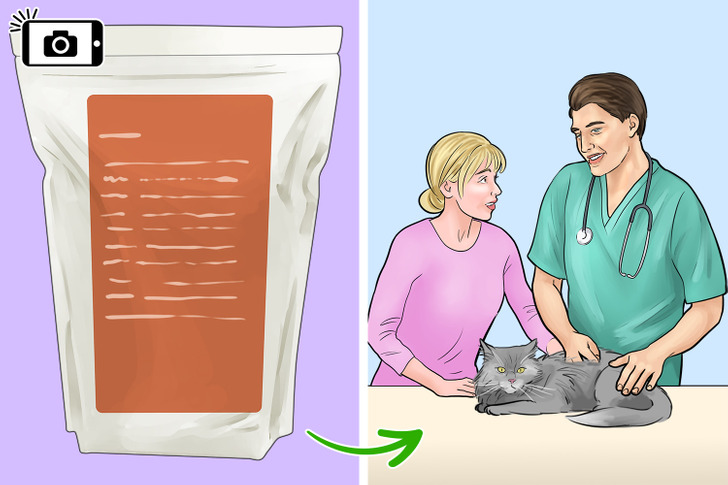
Before changing your cat’s diet, consult a veterinarian about the best course of action when it comes to changing it. Your veterinarian will assess your cat’s weight and body condition. They will tell you if its weight is good, too high, or too low. Do this so that your cat does not lose weight too quickly, as this can lead to complications and liver disease. It would be best to change its diet gradually over 1–2 weeks, sometimes three weeks.
Tip: Before you go to the vet, take a picture of the front and back of your cat’s bag of kibble or can of food to know the formulation and ingredients. Do the same for any treats you regularly give your cat. That way, you will be prepared and can get the most out of that visit.
2. Create a weight-reduction plan for your cat.
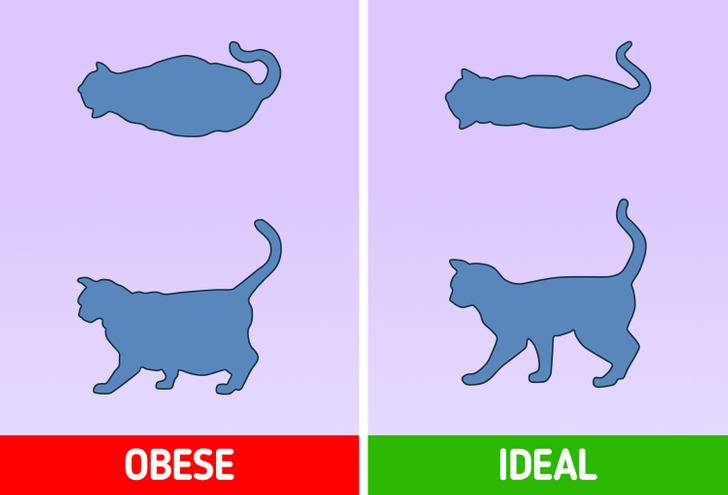
Cats are obligate carnivores. They evolved to eat a diet based on meat. Humans and dogs can get their nutritional needs from a combination of vegetables and meats, cats can’t. Therefore, many cats will lose weight more efficiently on a diet high in protein and low in carbohydrates. The best way for many cats to lose weight is canned diet food given several times a day. This will discourage your cat from nibbling all day long from boredom. Even those picky cats like wet food, so this way, the diet works well.
Within six to eight months, most cats will reach their ideal weight. If it lasts longer than this, something needs to be changed. Healthy weight loss is about 1 pound (454 g) a month. This will all depend on the cat itself. Some will need to go slower, while others will lose weight faster. The most important thing is that you and your family members are concerned, dedicated, and committed to helping your cat lose weight.
3. Practise portion control.
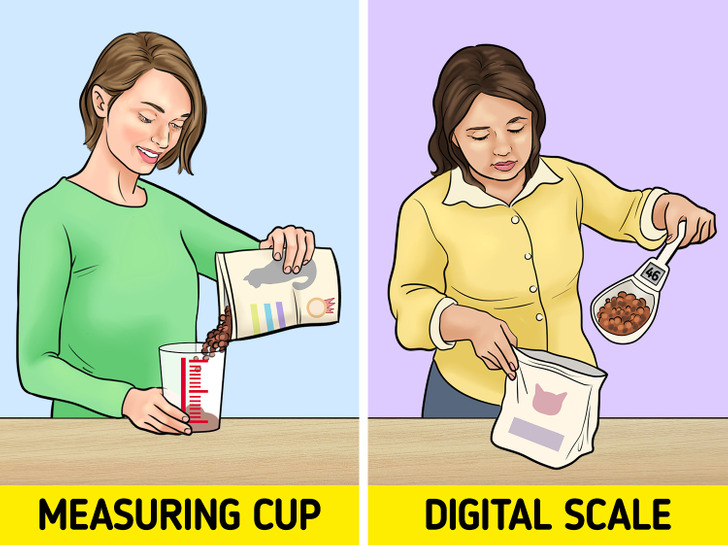
The amount of food your cat receives will depend on how old it is, its size, how active it is, whether it is indoor or outdoor, and is it pregnant and nursing. The average domestic cat should generally weigh approximately 8-10 pounds (3.6-4.4 kg). In order not to feed your cat too much, use a set of dry measuring cups for kibble. These scoops must have fine lines that indicate where the cup measurements are (e.g., 1/4 cup, 1/2 cup, etc.). And avoid adding just a bit above those lines, as this adds to your pet’s weight over time.
Tip: If you prefer to measure food by weight rather than volume, it is best to do so with a portable and easy-to-clean digital pet food scale.
4. Think about what you’re feeding your cat.
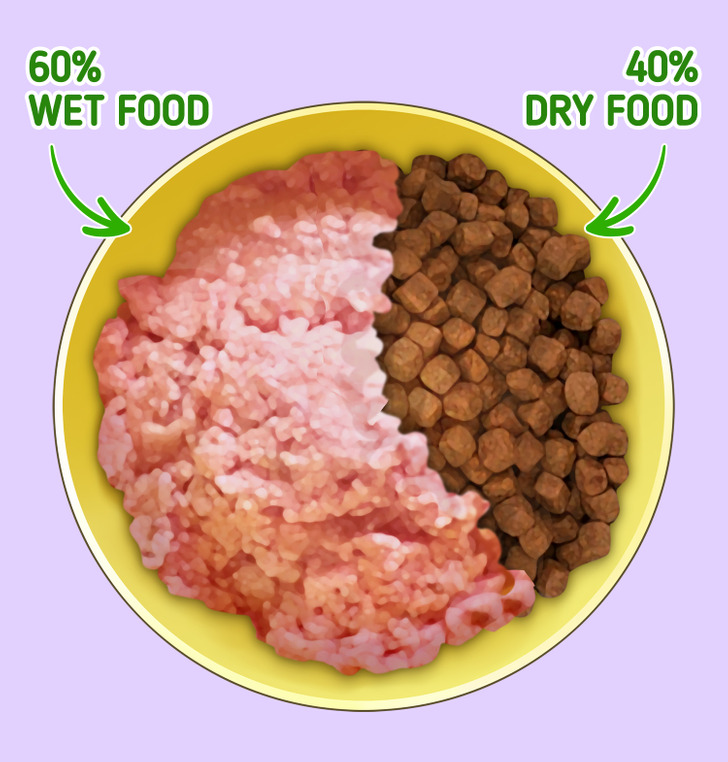
The food you give your cat is just as important as how much. If you feed your cat with kibble, stay away from commercial diet kibble. They are often inflated with air, and your cat will stay hungry because that air does not provide any real satiety. Cat food should be rich in fiber and protein and contain less fat, carbohydrates, and calories.
Instead, it’s better to add or increase the amount of wet food and reduce the amount of dry food. Density and more water will give your cat the feeling of fullness, and the amount of carbohydrates and calories is much less than in dry kibble food. Your cat can then eat more food without ingesting too many calories. An excellent proportion is 60% wet food and 40% dry food.
Tip: You can add a little canned pumpkin to your cat’s food (pure pumpkin, not pie filling). It contains a lot of fiber and moisture, which will make your cat feel full longer. Start with one-eighth of a teaspoon to get to a full teaspoon a day. Also, you can portion out servings in an ice cube tray and freeze them, so nothing will go to waste.
5. Weigh your cat regularly
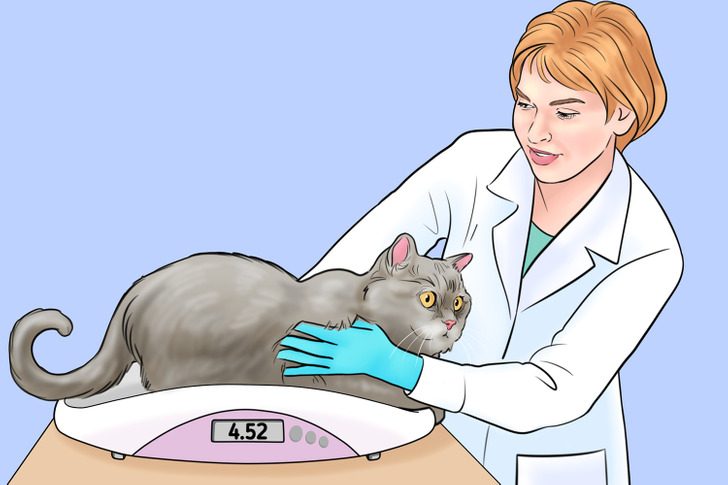
Regularly measuring your cat is important because they are small in size, and it’s difficult to recognize gradual weight loss or gain. Their weight’s a good indicator of health when it’s regularly tracked. For example, if you think about a typical 10-pound cat (4,5 kg), and it loses about 10 ounces (284 g) in a very short time — only 6% of its weight, it could be an indicator of a medical problem. It is best to keep the situation under control from the very beginning and not allow your cat to gain extra pounds.
6. How much do you give treats to your cat?
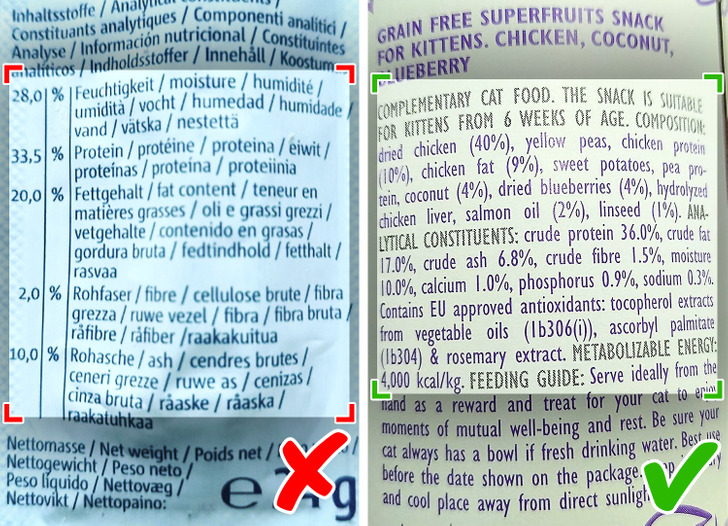
Treats should be only 10% of a cat’s energy/calorie intake. That’s because most cat treats are not complete and balanced. The level of carbohydrates in crunchy treats is usually too high for cats. Too many treats can contribute to your cat gaining weight and can upset their nutritional balance as well as affect their appetite for regular food. So choose the healthy ones cooked without any preservatives, added salt, or artificial coloring.
Tip: You can get recommendations about healthy treats from your cat’s veterinarian. They will know which snacks and treats are best and can give you specific recommendations. If they recommends a commercial product, be sure to read the manufacturer’s recommendations. That way, you will be sure that your cat eats the recommended amount of treats for his size.
7. Consider whether your cat is physically active enough.
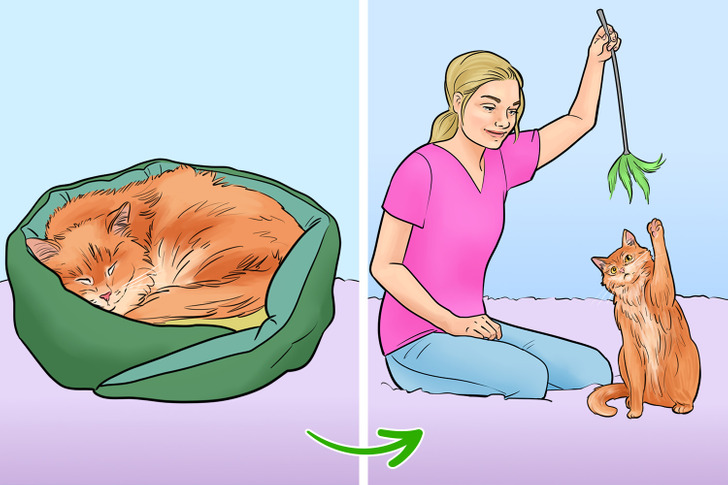
Cats hunt their prey by stalking it, spending very little energy looking for it. When they reach the prey, they start a quick and short-term chase. And when they finish hunting, they need hours to recover for the next chase. That’s why it’s important to get your cat initiated in that way, to give her the feeling that she is on the hunt. In that way, she will be physically active enough to stay fit. Playing with your cat will deepen your connection with her and help her feel better both physically and mentally.
Start slowly and gradually with your cat’s physical activity. Consider her physical condition, is she obese, has any health issues, or is a senior cat. You can use feather toys, laser pointers, paper or foil balls, or anything else that your cat finds interesting to chase.
Tip: You can play bird sounds to your cat while playing with feather toys or any other similar toy.
8. Switch to slow-feeders, interactive food puzzles, or hide and seek.
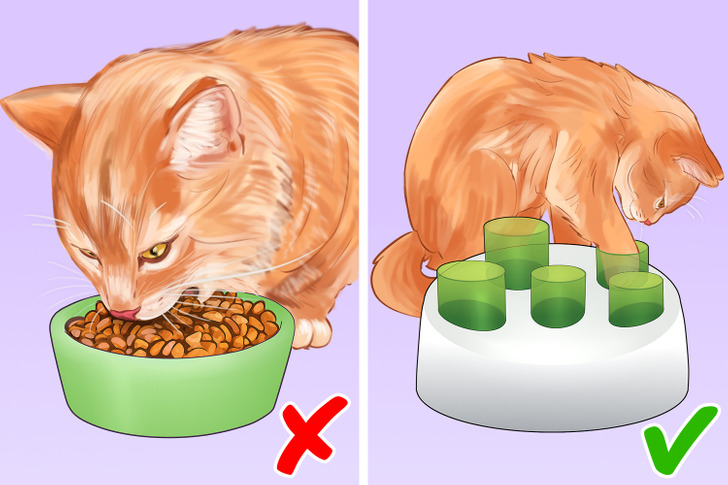
To make your cat eat slower and less, you can replace her ordinary bowl with a puzzle or interactive toy. Or you can use an automatic feeder. It releases food at a certain time each day, carefully measuring and controlling the number of calories your cat receives, even when you are not home. One other good way to slow down their eating is to add water to their food. You can also hide her kibbles all over the house and let her look for them, like the hunter that she is.